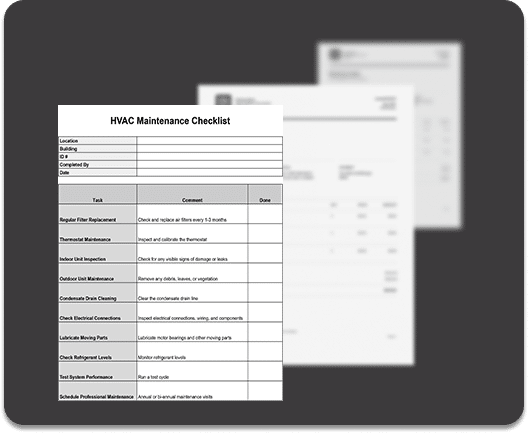This is a short submission (copied in full below) I made to the current rewrite of Australia’s digital strategy being curated by the Digital Transformation Agency.
Its main message is that digital transformation needs to think bigger and take itself more seriously. No disrespect to the complex and difficult technical, often transactional work that is being done, often well, to change the nature of our interactions with many aspects of governing. Quote the opposite. The best way to show respect for that work and for the smart, dedicated people doing the work inside and outside government is to put it in the bigger policy and strategic context whose contours and direction it is changing.
My reading in the last couple of weeks, especially this from Mariana Mazzucato and this from Roger L Martin, only serve to reinforce my view and add considerable weight to my suggestion.
If we are to build back better in the coming year, we need to design policy in terms not of levelling but tilting the playing field — in the direction of equitable, green and sustainable growth that favours all stakeholders and solves our greatest societal challenges. Fortunately, for the first time in a generation, government has the upper hand. (Mariana Mazzucato)
Take encouragement in the learning that comes from experiencing and observing the laws in action. Then tweak and tweak to make that prototype better and better until it is genuinely good — maybe even close to perfection. In essence, it means policymakers should act like software companies: promise imperfection followed by speedy fixes. (Roger L Martin)
It is to the kind of big shifts in governing, democracy and innovation that both write about so well that the true purpose, and therefore impact, of the digital transformation project will find its true value and significance. Persistent failure to make that connection and behave accordingly risks permanently underplaying the project’s intent and usefulness.
DIGITAL TRANSFORMATION STRATEGY 2.0
This short submission has been written by Martin Stewart-Weeks and is based, in large part, on ideas and insights presented in the book he co-wrote with Simon Cooper, published in July 2019 – Are We There Yet? The Digital Transformation of Government and the Public Sector in Australia (Longueville Media 2019).[1]
Three propositions
The next iteration of the federal government’s digital transformation strategy should reflect three propositions.
First, that digital government is government, the digital economy is the economy and a digital society is society. The notion that there are two realms, the digital and the analogue, and that they remain separate and distinct, hasn’t been true for a while and it certainly isn’t going to be true for the next 10 or two years. The next digital transformation strategy should unequivocally demonstrate that digital transformation isn’t the point. The point is the transformation of government – its role, purpose, function, leadership and operations.
Second, the experience of 2020, the “year of emergencies”, and especially the impact of the response to COVID-19, has jolted the Australian economy and society, including but well beyond government, onto a new, deeper and more pervasive digital trajectory.
The next strategy doesn’t just start from where the current one left off. It starts from a new place, a more intense engagement with the profoundly digital nature of the world in which we now live. That is a good thing. It is, in many ways, the “dividend” that, for all the pain and distress it has wrought, the collective response to the pandemic from governments and public services around the country has delivered. The question is how we choose to invest it.
Third, digital transformation of government and the public sector has got to stop selling itself short. Its significance is not a function of the technical, operational and often transactional reforms that seem to occupy so much time, energy and commentary. If that observation sounds as if it is discounting the extraordinary skill and hard work that goes into “doing the tech” very well, it isn’t.
Far from it. That work, as the discussion paper for the strategy refresh makes clear, is producing some great results that are having a practical impact on the lives and work of people and businesses all around the country. But it isn’t in the end what the “transformation” dividend promises.
Digital and data are wreaking extraordinary and sometimes very unsettling changes in every facet of our lives. And the same forces of digital and technology imagination and invention, whose rhythm cannot be either predicted or denied (but should be directed and contained by rules that reflect bigger policy priorities and the common good) are offering solutions to the disruption they are largely causing.
Big questions about governing, democracy, defining a good society and a good life are being shaped by digital. Those who are leading and doing the transformation need to more explicitly embrace that scale and scope of their work.
It’s almost as if the digital transformation project, if we can call it that, doesn’t take itself seriously enough. Digital is one part of a mix of cultural, technology, political and economic factors combining to fuel a search for a new “theory of the business”[2] for governing and government. And digital and data are both embedded in the emerging “theory” that defines the purpose of government as finding new and better way to mobilise collective intelligence for better public problem solving.
It is a theory that implies “a different conversation about how problem solving gets done. The hallmarks of the new practice are humility, utility, and adaptability. New practitioners start small and recognize what they don’t know. They believe in empiricism and are not afraid to change their minds. They prize results over ideology, align data with design for those they serve, and understand that solutions can come in many forms: law and policy, certainly, but also technology, norms, culture, and collaboration.”[3]
Three further reflections
1
In many respects, the “direction of travel” for the next digital transformation strategy is clear and spelled out in many of the propositions covered in the discussion paper. It’s hard, for example, to assume the next strategy won’t invest in these elements:
- A greater level of inventiveness and imagination at the heart of the imperative to innovate and experiment
- The ability to work “agile” and “light”, which means creating more space in the culture of government agencies for ways of working that are more influenced, perhaps infected, by the attitudes and rhythms of the digital world itself.
- A much more vigorous “enterprise” approach or “whose of government” architecture for planning and executing every dimension of digital transformation, including especially planning and shaping an overall agenda for government and investing in fewer, stronger and more inclusive platforms and infrastructure elements that reduce complexity and fragmentation, provide strength and resilience and allow speed and intensity too.
The contribution to the recent Digital Summit by Home Affairs Secretary Mike Pezzullo provided a clear and very direct statement of the need to move unequivocally and with some haste and determination down this path. And it aligns very much with the call in the book and from many others for a greater focus on the provision of public digital infrastructure whose value is a function of strong, simple architecture and widespread, shared use.
The resistance to “whole of government” can’t be sustained and shouldn’t be tolerated. That will be true more than ever in other areas like cyber security, identity and procurement. It feels as if the arguments are over now; the questions are more about execution, monitoring and adjusting and tracking the impact and benefits.
- Of course, the focus on talent, capabilities and culture, the people and leadership dimension of any effective transformation, has to be central, pervasive and actively led. Job descriptions and recruitment strategies need to explicit privilege demonstrated digital skills and confidence at the appropriate levels for different roles. It ought increasingly to be impossible to land a leadership role in the public service without a commensurate level of digital literacy.
- A more concerted focus on adapting ethical AI and the rising tools of automation and complex data analysis into policy, regulatory reform and service delivery.
2
The principles that already guide the transformation strategy should be reaffirmed. But, partly as a function of the “emergency” digital experience that the past 12 months has provided, three are three other attributes of effective digital transformation that could be added – familiarity, credibility and reliability.
Familiarity – part of the challenge of any major shift to digital (and data, often backed and supported by design methods and culture) is to make sure that people become familiar with the new tools and platforms. At least part of the challenge of the transformation process is to create a level of comfort and confidence in the new ways of working and engaging that digital change and innovation offers.
Credibility – people need to believe in the rigour and capability with which the new tools and systems have been designed and delivered. Almost literally, can they believe in them? Can they “lean” on their new capabilities and will they hold up under the pressure of use and scale?
Reliability – the final attribute speaks to people’s willingness to trust the new systems, tools and applications. Can they assume that the invitation to engage the new tools, new ways of working and the shifting cultures and mindset of a more digital culture won’t lead to frustration and disappointment? Will these things work consistently and ethically and how can we be sure?
3
A final reflection speaks more to the areas of focus within which digital transformation’s next phase should be active.
There is understandably a focus at the moment in the post-COVID environment on policy and investment that focus on economic recovery and employment. That focus is both necessary and urgent. It will remain a key focus for the new digital strategy too.
But the biggest revelation of the COVID-19 experience, and also of the earlier period of bushfire emergencies, is the quality of Australia’s systems of care and caring.
The pandemic especially has brought with it a renewed sense of vulnerability that has impacted so many and reinforced the importance of a sense of care and connectedness, of empathy and a regard for others and for the relationship between individual wellbeing and security and the wellbeing and security of the wider society
Our systems of care more directly have shown both great resilience, surpassing capability and strength and, at the same time, deep fragility and considerable uncertainty.
When the experience of 2020 is combined with the insights emerging from the current spate of Royal Commissions – disability, mental health and aged care chief among them – it is clear that these are systems which, despite the heroic commitment and extraordinary hard work of so many, are stretched to breaking point, if not already beyond.
Digital transformation has to have something more and deeper to say and offer into this domain, and not only because it is both the right thing to do or that there is some moral or social good to be pursued, which there undoubtedly is.
It is also important because it speaks directly to the proper obsession with economic resilience, rapid rebuild and renewal in the wake of the pandemic and to the urgent need to create jobs. Health and social care remain the largest domains for employment growth over the next 10 to 15 years. Our ability to rebuild and strengthen our systems and practices of care and connectedness have been shown to be an integral part of our economic resilience too.
The care system and our culture and practice of care with and for each other are not peripheral or second order policy challenges or reform and innovation challenges. They are mainstream policy priorities and digital transformation should be playing a large part in the response over the next 5 to 10 years.
A couple of practical ideas
(1) Create a permanent showcase of well researched and easily accessible best examples of “doing digital” well in the terms set out in the discussion paper – faster, easier, more agile, using the tools and culture of digital to drive digital experimentation and new ways to imagine, design. and mobilise different types of service model.
(2) Make much greater use of mixed teams from inside and outside government to work together on new solutions, harnessing ideas and experience from a wider and more imaginative mix of skills and experience outside and across government and coupled too with greater transparency so that, as often and as much as possible, the work is done “in the open”.
This reflects too a greater willingness to share authority, power and control over the design and mobilisation of new methods and solutions but within the framework of clear and shared intent, purpose and values.
Sydney 17 December 2020
[1] https://www.booktopia.com.au/are-we-there-yet–martin-stewart-weeks/book/9780648510734.html
[2] https://hbr.org/1994/09/the-theory-of-the-business
[3] https://ssir.org/articles/entry/the_new_practice_of_public_problem_solving#



















